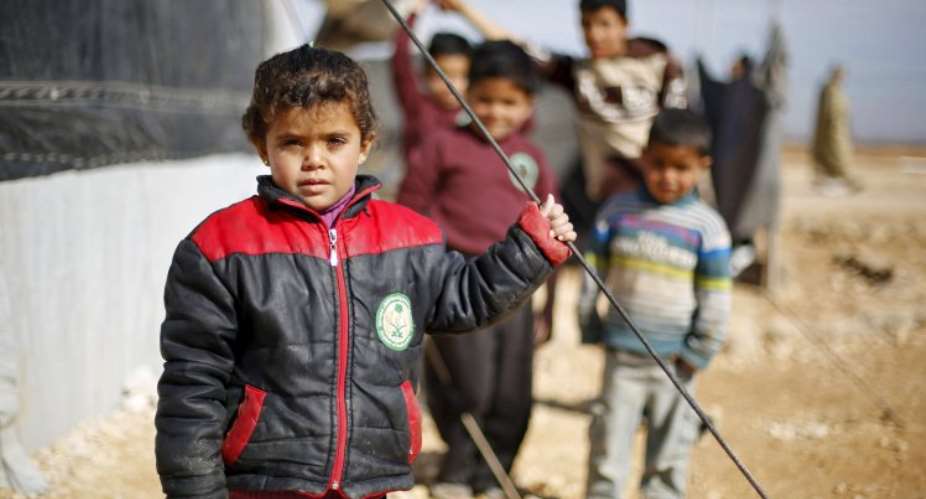A new policy paper, ‘No more excuses’ jointly released by the UNESCOGlobal Education Monitoring (GEM) Report and UN High Commission on Refugees (UNHCR) ahead of the World Humanitarian Summit on May 23-24 reveals new data showing that only 50% of refugee children are in primary school and 25% of refugee adolescents are in secondary school.
The paper calls for countries and their humanitarian and development partners to urgently ensure that those forcibly displaced are included in national education plans and to collect better data to monitor their education status and progress.
“There are unprecedented numbers of forcibly displaced populations, putting huge pressure on education systems. But for these children and youth education is especially important: by simply being in school, they are better protected from trafficking, illegal adoption, child marriage, sexual exploitation and forced labour”,saidIrina Bokova, Director-General of UNESCO.
Behind the global average number of refugee children out of school, there are significant differences among countries. Primary enrolment rates average 80% in selected refugee sites in Egypt, the Islamic Republic of Iran and Yemen, but only 40% in Pakistan and 50% in Ethiopia.
Access to secondary education is even more limited for refugees in many countries. In Kenya, Pakistan and Bangladesh, less than 5% of adolescents aged 12 to 17 were enrolled in secondary education. Enrolment in early childhood education also remains very limited in some countries, reaching only 7% in Turkey in 2015.
"Refugee children, like children everywhere, have the right to education. It is fundamental that children who have been uprooted by war and violence are not left behind even further," said Filippo Grandi, High Commissioner for UNHCR. "We urge donors and development organizations to support efforts to include refugee children and youth in national education systems."
Aaron Benavot, Director of the UNESCO GEM Report says collecting information on moving populations is challenging, if not impossible sometimes. “What little we know is mostly about those living in camps, yet more than half of the world’s refugees reside in urban areas, where even less is known because information systems aren’t tracking them. We need to know who they are, what they’ve been through and whether we’re effectively responding to their needs.”
From select available data outside of camps, the paper shows that of school-aged Syrian refugees only 53% in Jordan and 30% in Turkey are enrolled in school.
Reliable data on internally displaced people (IDPs) are even more limited, but reports indicate that their displacement is putting huge strain on already weak education systems. In Nigeria, for instance, children displaced due to attacks by Boko Haram in 19 out of the 42 camps did not have access to any form of education in June 2015. In Iraq, only 32% of internally displaced children and adolescents in 2015 had access to any form of education. In Yemen, only one third of school age IDP children in Lahj governorate were enrolled in school.
Those already marginalised, such as girls, are often the worst affected among refugees. In Kakuma camps in Kenya, in 2015, only 38% of primary school students were girls. In Pakistan, where child marriage and teenage pregnancy are often cited among refugee girls, dropout rates for refugee girls are as high as 90%.
Girls and women make up 70% of the world’s internally displaced population and are left the furthest behind in education. In Iraq, in Najaf governorate 81% of 15-17 year-old girls were out of school compared to 69% of boys of the same age. In urban areas in Afghanistan only 1% of IDP women were found to be literate versus 20% of IDP men.
The paper advocates for four main policy directions for governments and their partners to tackle the diverse neglected needs of IDPs and refugees:
Enshrine forcibly displaced people’s rights to education in national laws and policy
Include displaced children and youth in national education systems
Enable accelerated and flexible education options to meet diverse needs
Ensure an adequate supply of trained and motivated teachers





 Akufo-Addo spotted ordering chiefs to stand for his handshake
Akufo-Addo spotted ordering chiefs to stand for his handshake
 Akufo-Addo ‘disrespects’ every chief in Ghana except Okyenhene — NDC Communicato...
Akufo-Addo ‘disrespects’ every chief in Ghana except Okyenhene — NDC Communicato...
 Supreme Court clears way for dual citizens to hold key public positions
Supreme Court clears way for dual citizens to hold key public positions
 Be transparent, don’t suppress the truth – Prof. Opoku-Agyemang to Jean Mensa
Be transparent, don’t suppress the truth – Prof. Opoku-Agyemang to Jean Mensa
 ‘I won’t tell the world I was only a driver’s mate during challenges’ – Prof Jan...
‘I won’t tell the world I was only a driver’s mate during challenges’ – Prof Jan...
 We’ll prosecute corrupt officials of Akufo-Addo’s govt – Prof Jane Naana
We’ll prosecute corrupt officials of Akufo-Addo’s govt – Prof Jane Naana
 [Full text] Acceptance speech by Prof Jane Naana Opoku-Agyemang as 2024 NDC Runn...
[Full text] Acceptance speech by Prof Jane Naana Opoku-Agyemang as 2024 NDC Runn...
 Election 2024: Don’t be complacent, we haven’t won yet – Asiedu Nketia cautions ...
Election 2024: Don’t be complacent, we haven’t won yet – Asiedu Nketia cautions ...
 Election 2024: Stop fighting over positions in Mahama’s next govt – Asiedu Nketi...
Election 2024: Stop fighting over positions in Mahama’s next govt – Asiedu Nketi...
 Prof Jane Naana Opoku-Agyemang will restore dignity of vice presidency – Fifi Kw...
Prof Jane Naana Opoku-Agyemang will restore dignity of vice presidency – Fifi Kw...
